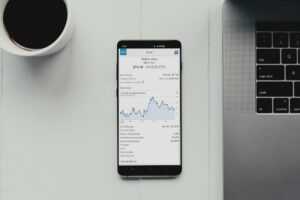Forex trading is a highly lucrative and exciting market that attracts millions of traders from around the world. However, to be successful in forex trading, it is crucial to have a thorough understanding of the various concepts and terms used in the industry. One such concept is margin level, which plays a significant role in determining the overall health of a trader’s account. In this article, we will delve into the details of how to calculate margin level in forex trading.
Margin level is a term used in forex trading to assess the amount of available funds that a trader has in their account to open new positions or sustain existing ones. It is a measure of the financial health of a trader’s account and is calculated by dividing the trader’s equity by the used margin and then multiplying the result by 100 to express it as a percentage.
The equity in a forex trading account is the total value of the account, including the profit or loss from open positions. It is calculated by adding the account balance with the unrealized profit or loss. For example, if a trader has a balance of $10,000 and an open position with a profit of $2,000, the equity in their account would be $12,000.
On the other hand, the used margin is the amount of money that is currently tied up in open positions. It is the collateral required by the broker to maintain the positions and is typically a percentage of the total value of the positions. The used margin can vary depending on the leverage used by the trader. Leverage allows traders to control a larger position with a smaller amount of capital. For instance, if a trader has a leverage of 1:100 and wants to open a position worth $10,000, they would only need $100 as the used margin.
To calculate the margin level, the trader needs to divide their equity by the used margin and then multiply the result by 100. For example, if a trader has an equity of $12,000 and a used margin of $3,000, the margin level would be calculated as follows:
Margin Level = (Equity / Used Margin) x 100
Margin Level = ($12,000 / $3,000) x 100
Margin Level = 400%
A margin level of 400% indicates that the trader has four times the amount of available funds compared to the used margin. This is considered a healthy margin level, as it provides a significant cushion for the trader to withstand market fluctuations and potential losses.
However, it is important to note that maintaining a high margin level is crucial to avoid a margin call. A margin call occurs when the margin level falls below a certain threshold, typically set by the broker. When a margin call is triggered, the broker may close some or all of the trader’s positions to protect their own interests.
To avoid a margin call and ensure a healthy margin level, traders should closely monitor their positions and manage their risk effectively. This can be achieved by using stop-loss orders to limit potential losses and by diversifying their portfolio to spread the risk across different currency pairs.
In conclusion, understanding how to calculate margin level in forex trading is essential for traders to assess the financial health of their accounts. By monitoring the margin level, traders can make informed decisions about opening new positions and managing existing ones. It is important to remember that maintaining a healthy margin level is crucial to avoid a margin call and protect the trader’s interests.






